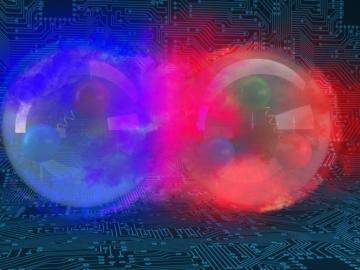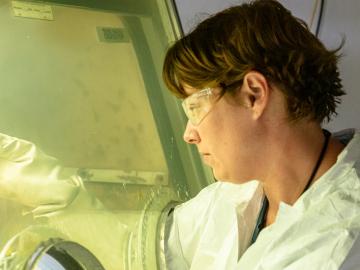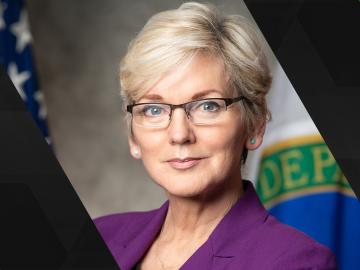Filter News
Area of Research
- Advanced Manufacturing (1)
- Biology and Environment (23)
- Clean Energy (10)
- Computational Biology (1)
- Fusion and Fission (7)
- Fusion Energy (1)
- Isotopes (7)
- Materials (3)
- Materials for Computing (4)
- National Security (3)
- Neutron Science (5)
- Nuclear Science and Technology (1)
- Quantum information Science (2)
- Supercomputing (12)
News Topics
- 3-D Printing/Advanced Manufacturing (4)
- Advanced Reactors (1)
- Artificial Intelligence (4)
- Big Data (1)
- Bioenergy (9)
- Biology (14)
- Biomedical (6)
- Biotechnology (3)
- Buildings (2)
- Chemical Sciences (2)
- Clean Water (3)
- Climate Change (3)
- Computer Science (14)
- Coronavirus (2)
- Cybersecurity (1)
- Decarbonization (3)
- Energy Storage (5)
- Environment (21)
- Exascale Computing (2)
- Frontier (1)
- Fusion (1)
- Grid (1)
- High-Performance Computing (9)
- Isotopes (6)
- ITER (1)
- Materials (4)
- Materials Science (6)
- Mercury (3)
- Microscopy (3)
- Nanotechnology (3)
- National Security (4)
- Neutron Science (6)
- Nuclear Energy (4)
- Physics (2)
- Polymers (1)
- Quantum Computing (1)
- Quantum Science (4)
- Security (2)
- Space Exploration (1)
- Summit (4)
- Sustainable Energy (7)
- Transportation (6)
Media Contacts

Despite challenges posed by the COVID-19 pandemic, research at ORNL in 2021 continued apace, with developments across the lab’s broad science and technology missions. Among our most popular news stories in the past year:

The world is full of “huge, gnarly problems,” as ORNL research scientist and musician Melissa Allen-Dumas puts it — no matter what line of work you’re in. That was certainly the case when she would wrestle with a tough piece of music.

Burak Ozpineci started out at ORNL working on a novel project: introducing silicon carbide into power electronics for more efficient electric vehicles. Twenty years later, the car he drives contains those same components.

It’s elemental — scientists agree that the periodic table is incomplete. And when it comes to unveiling parts of the periodic table yet undiscovered, ORNL is doing some heavy lifting.

Biologist Larry York’s fascination with plant roots has spurred his research across four continents and inspired him to create accessible tools that enable others to explore the underground world.

Energy Secretary Jennifer Granholm visited ORNL on Nov. 22 for a two-hour tour, meeting top scientists and engineers as they highlighted projects and world-leading capabilities that address some of the country’s most complex research and technical challenges.

Using novel data sets and computing systems, researchers at ORNL are simulating how climate change affects the safety and security of the country.

A team led by the U.S. Department of Energy’s Oak Ridge National Laboratory demonstrated the viability of a “quantum entanglement witness” capable of proving the presence of entanglement between magnetic particles, or spins, in a quantum material.

Carrie Eckert applies her skills as a synthetic biologist at ORNL to turn microorganisms into tiny factories that produce a variety of valuable fuels, chemicals and materials for the growing bioeconomy.

On Sept. 28, U.S. Secretary of Energy Jennifer Granholm joined leadership and top scientists and engineers online at Oak Ridge National Laboratory for a two-hour whirlwind tour.




